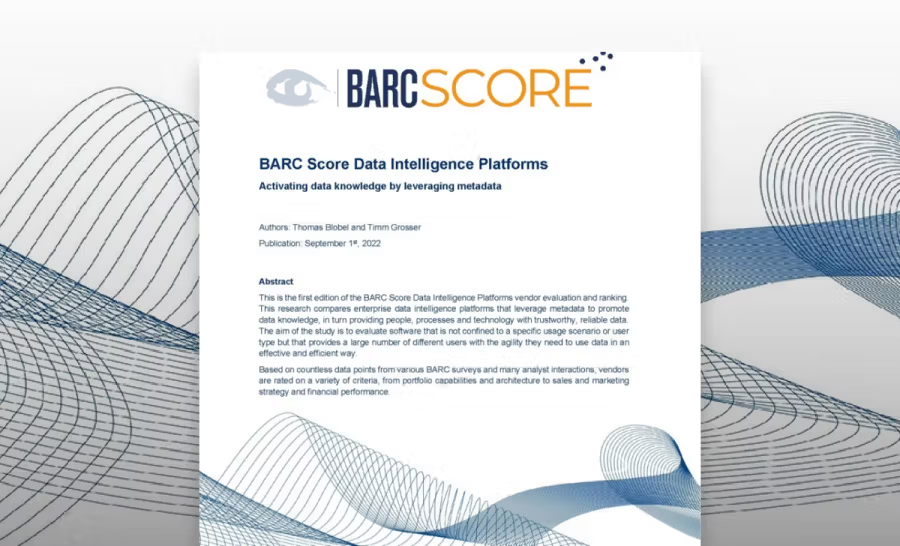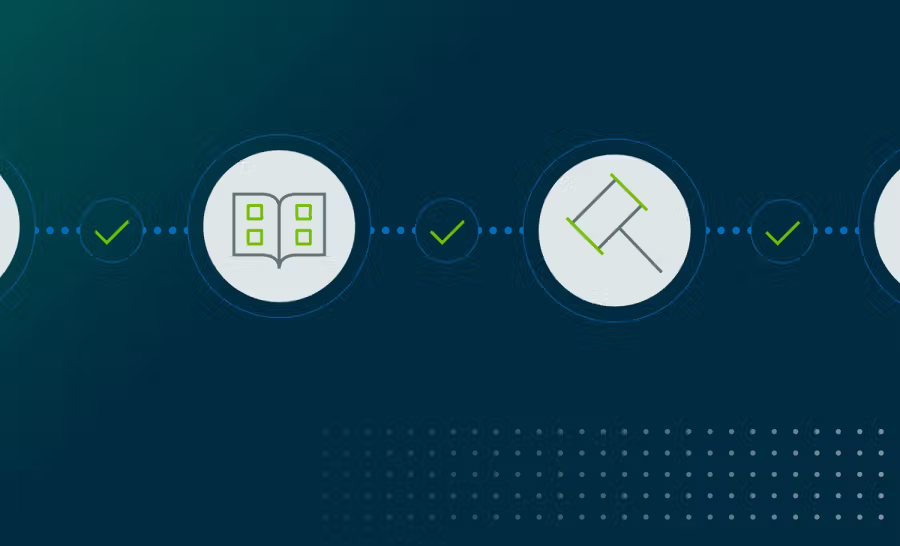What is data literacy?

Data literacy is defined as reading, creating, understanding, and communicating data as information. The modern world is driven by data, from how people communicate to how they make everyday decisions. Data is everywhere you turn, but understanding it is crucial in business settings.
In business settings, you can define data literacy as the ability to read vital information on customers, sales, profits, losses, and marketing campaigns (among others) and then communicate that information to others.
Despite data being a crucial part of any business, regardless of size, only 76% of key business leaders feel confident in their data literacy. The data literacy gap is even more notable when applied company-wide. According to a recent survey, only 24% of respondents were fully confident in their data literacy. The remaining 76% of respondents were either not data literate or felt their literacy was lacking to some degree in one or more areas.
Poor data literacy can hold back individuals and the businesses they serve. As the world and technology evolves, data literacy will become an even more crucial skill.
Why data literacy is important
Increased data literacy means better results for your company. Without boosting data literacy across your organization, you won’t be able to make the best use of valuable business resources. These resources are crucial to informed decision-making, which has the potential to increase productivity, profits, and growth opportunities. Put simply, a company that suffers from a data illiterate staff will not be able to grow and succeed to its fullest potential.
Most companies are already collecting massive amounts of data. This data can take many forms but generally includes customer surveys, business reviews, website analytics, point-of-sale metrics, marketing campaign information, and online sales data. Depending on your industry and other key considerations, your company may collect more or less data. This is an excellent start toward being a data-driven company, but if your employees aren’t data literate, none of that collected information will make a difference in your bottom line.
Data literacy shouldn’t be confined to the IT department, either. The future demands that every professional cannot only define data literacy but possess these skills to some degree. Your customer service representatives may not need the same level of literacy possessed by your IT department. However, they should still feel comfortable reading data and understanding how to use it to make informed business decisions. This not only makes your company more data-driven, and therefore more informed, but it also streamlines your operations and increases overall efficiency.
Data literacy examples
Explaining data literacy and how it works is one thing, but let’s look at examples of how this skill is applied in the real world – both in business and in someone’s personal life.
Example A: Employee makes a case to pivot
While working with spreadsheets, an employee learns why and how a data set led to a decision. Since this employee has solid data literacy, they have now gained a deeper understanding of their company domain. Alternatively, their ability to interpret data makes them believe a different decision would be more worthwhile. The employee brings this to the attention of their higher-up and argues for a different course of action based on their understanding of the data.
Example B: Marketer spots problem area in campaign
A marketing professional launches what they believe will be a well-performing campaign. However, they aren’t getting as many leads or sales as forecasted. Thankfully, the marketer has accumulated ample amounts of data on how their efforts have performed and why. After looking over their data, the marketer spots the problem area in their campaign. Using this information, the campaign is altered accordingly, and the campaign’s results improve dramatically over time.
Example C: Parent makes informed decision about bakery
The benefits of data literacy aren’t confined to the realms of business. For example, a parent has decided to choose a professional cake for their child’s birthday, but is torn between three options. They accumulate data from online reviews, word-of-mouth references, and price comparisons. Using this information, they decide to choose a bakery, and the cake they receive goes beyond their initial expectations.
How data literacy can help your organization
Data literacy can improve your organization at both an individual and company-wide level. At an individual level, employees will feel more confident in their abilities to complete tasks. In addition, they’ll gain a more solid understanding of the why behind decisions made at levels above and below them. With more confidence, each employee will become more productive, efficient, and satisfied with their jobs. Additionally, employees who possess at least a moderate level of data fluency will feel more secure in their positions, which leads to less workplace stress.
Your organization will benefit from promoting an understanding of data literacy by achieving net gains in data quality and increasing innovation and collaborative communication. Additionally, data literacy can help improve work process efficiencies, which has the potential to significantly increase productivity, employee satisfaction, customer satisfaction, and profits.
The question of why data literacy is important to your company has a range of answers. As you can see, the benefits of data literacy have the potential to permeate every part of your organization.
How to build data literacy in your company
Although there’s no single way to establish data literacy in your company, there are some proven methods to begin promoting it.
Technical literacy vs. data literacy
Technical literacy and data literacy are two different things. Technical literacy is the ability to understand and use technological tools, software, and programs to accomplish tasks. Having employees who can use data collection software, for example, aren’t necessarily data literate. They may use a particular program to collect data, but can they understand that data to make informed decisions? Can they then communicate those findings to others to make informed arguments? Although technical literacy is also crucial, it isn’t the same thing as data literacy, and the two need to be distinguished within your organization.
Understand where your company currently stands
Get an understanding of how data literate your company is as a whole. Survey and test employees to see how data literate they are. The average literacy rate of employees can determine how to develop your company’s data literacy program moving forward.
Create a data literacy program
Once you know how data literate your company is already, you can move forward with creating and implementing a data literacy program. The best programs will implement online and in-person training since everyone learns differently. You can make use of pre-existing data literacy programs or develop your own with the help of professionals. Make learning data fun, and include everyone from the top of your company down. Consider incorporating rewards or prizes into your program to incentivize data learning further.
Define Success
What does success look like for your data literacy initiatives? Without goals, benchmarks, and ongoing metrics, it can be impossible to determine the efficiency of your data literacy program.
What topics should data literacy training cover?
Data literacy training should offer a comprehensive overview of all competency aspects. This means training should include how to read, work with, analyze, and communicate data.
Reading data means understanding what it is and what it represents. It should also include a thorough understanding of quantitative versus qualitative data and the importance of each, as well as how to interpret various graphs, spreadsheets, and other collection methods.
Working with data means the ability to create, acquire, and manage it. Training on how to work with data should also include segments on how to “clean” it or ensure all gathered information is accurate and do away with anything that isn’t.
Analyzing data means understanding what the information gathered means. This works hand-in-hand with learning how to read data but takes it further. Training segments on analyzing data should teach how to sort, filter, compare, and aggregate data.
Communicating data means using the information gathered to support a larger narrative and thoroughly explain to others what has been found. Generally, data communication is intended to tell a story or send a message to a particular audience. For your business, this audience may be coworkers, executives, or current and potential customers.
4 tips on how to become data literate
In the earlier section on building data literacy, you were given helpful information on how to become more data literate. In addition to this earlier information, below are four simple tips to incorporate into your journey towards data literacy.
1. Develop literacy goals
The importance of developing data literacy goals can’t be understated. It’s impossible to ensure success without first defining it. You may find it helpful to set short-term goals that lead to a single long-term goal, both at an individual and organizational level.
2. Translate into common language
One reason many people feel overwhelmed with learning how to read and use data is the jargon that comes with it. Making an effort to translate this into everyday language is a helpful way to increase understanding. For example, the term “data” simply means “information that’s been converted into another form so it can be used.” Translate any words or phrases you don’t understand into everyday language and make an effort to use these simpler terms in your company’s data literacy program.
3. Collaborate with others
Working towards data literacy with others or collaborating on data-related projects can benefit everyone involved. Each person brings a unique skill set and level of understanding to the table. Data literacy will soon spread throughout your organization if each person also brings a willingness to communicate and teach to the table.
4. Take a training course
Of course, one of the easiest ways to increase data literacy is to participate in a training course, certification program, or other educational efforts. Your company’s data literacy program isn’t only for your employees. It’s also for you and every other member of your company, from the CEO to the front desk receptionist. Everyone can benefit from increasing this in-demand skill set, albeit to varying degrees.
What is the future of data literacy?
It wasn’t so long ago that the business world began adjusting to the digital age—an age in which computers made numerous processes simpler, faster, and more efficient. When computers and other pieces of technology first entered the scene, many were hesitant to begin implementing them. In the beginning, computer literacy was low, and it took time to become the widespread skill it is today. The next big step in technology and business applications is data literacy.
Many professionals are a little apprehensive about learning how to read, use, and communicate data. However, there’s a slow but inevitable trend towards a desire to increase data literacy because more people are starting to understand its importance. An increase in awareness is the first step to implementing any new technology or skill set. This awareness is followed by more widespread understanding and use until the “new” thing is commonplace. This is the future of data literacy.
One day, data literacy will become an integral part of every department in every business, in every sector or industry around the world. Today, you’re witnessing a revolution towards widespread data literacy and the founding of programs designed to fuel this movement onward. It isn’t far-fetched to believe companies will soon start requiring all employees to have some level of data literacy. Certain companies may even begin incorporating a data literacy program into their onboarding process.
Collibra is doing its part in driving this new movement toward a data literate future. Our platform helps empower companies to find meaning in their data and promote collaboration, aiding in a data-driven organization. Reach out today to learn how Collibra can help your organization become more data literate and compete in a data-driven global market.
Related articles

Data IntelligenceJanuary 27, 2022
Accelerate IFRS-17 Compliance with Data Intelligence Platform

Data IntelligenceSeptember 27, 2022
Collibra is a Market Leader in first-ever BARC Data Intelligence Platform Vendor Evaluation

Data IntelligenceOctober 28, 2022
The must-have checklist for maximizing the value of your data catalog and governance investments with Collibra

Data IntelligenceMarch 10, 2022
Improve data literacy and data sharing in government
Keep up with the latest from Collibra
I would like to get updates about the latest Collibra content, events and more.
Thanks for signing up
You'll begin receiving educational materials and invitations to network with our community soon.
